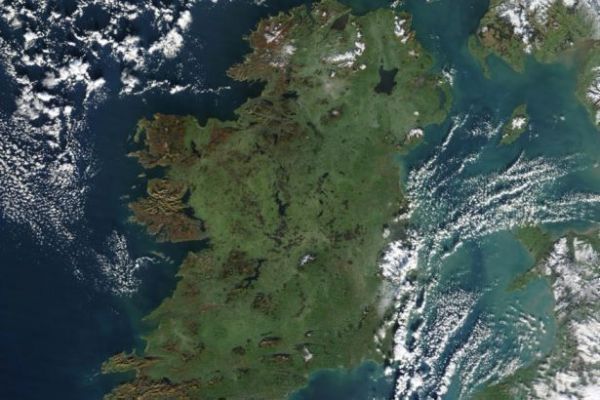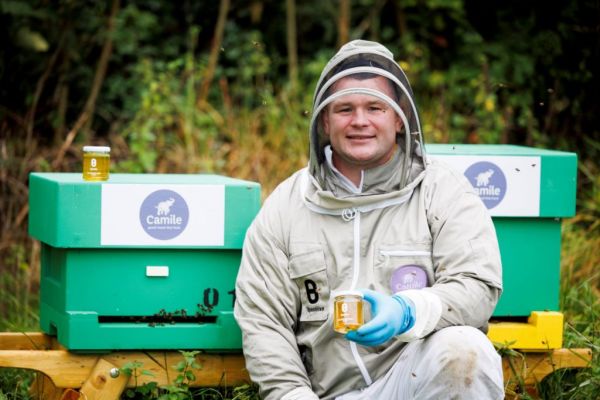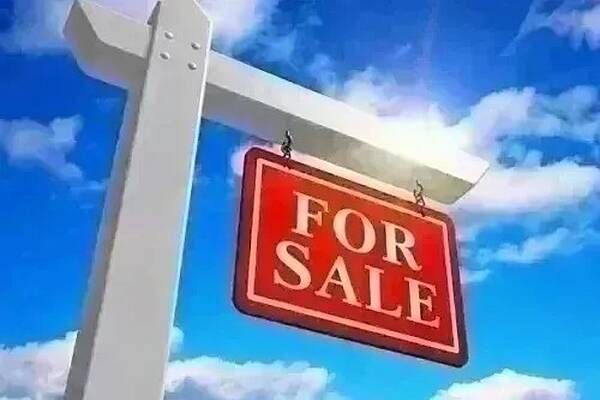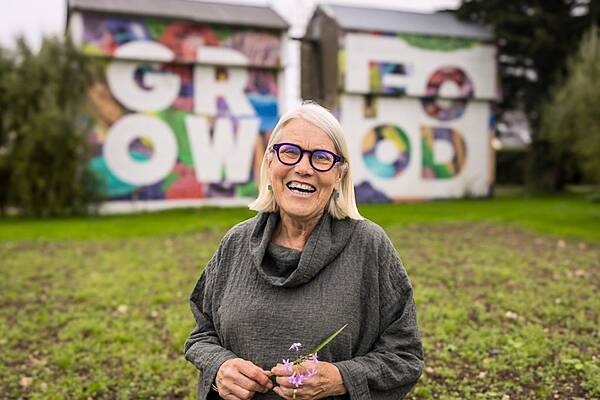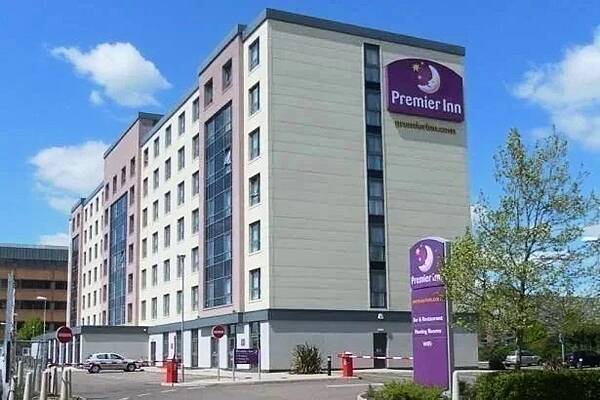The Central Statistics Office (CSO) has highlighted 2020 Irish hospitality sector data in a newly-published Statistical Yearbook of Ireland.
In a statement published on its website, the CSO said, "Welcome to the twenty-first issue of the Central Statistics Office (CSO) annual Statistical Yearbook of Ireland 2021. This presents a comprehensive picture of Ireland today based on statistics published by the CSO throughout the year."
Food, Beverages, Services And Accommodation
The CSO stated on its website, "A snapshot of business in Ireland and the economy based on statistics compiled by the Central Statistics Office
- "Electrical Goods (+16.4%), Food, Beverages & Tobacco (Specialised Stores) (+14.8%) and Hardware, Paints & Glass (+14.2%) were the sectors with the largest increases in volume of sales in 2020 when compared to 2019
- "Dublin (6042), Cork (2,452), Kildare (1,661), Meath (1,510), Galway (1,054) and Wicklow (1,046) all had more than 1,000 new dwellings completed in 2020, while Leitrim (37) was the only county with less than 100 dwellings completed
- "The total value of residential property purchases by households at market prices filed with the Revenue Commissioners in 2020 was €11.3 billion and the median price of dwellings sold nationally in 2020 was €260,000
- "After a continuing decline from 2012 to 2016, and slight increases from 2017 to 2019, the amount owed by households to Irish banks decreased in 2020, standing at €87.0bn at year end
- "The largest trading partner for exports of merchandise and services in 2020 was the United States (€98.3 billion) followed by exports to the United Kingdom (€55.3 billion) and exports to Germany (€40.9 billion)
- "Household expenditure on goods and services, shows spending on alcoholic beverages (purchased for consumption at home) increased from €2.2bn in 2019 to almost €2.7bn in 2020."
The CSO continued, "CSO surveys and analysis are used to look at many facets of Irish society. When it comes to Internet Usage by Enterprise more than half (51%) of enterprises in Ireland indicated they purchased at least one type of Cloud Computing service in 2020. This compares to 45% of enterprises surveyed in 2018. The most popular service purchased was the storage of files.
"In terms of Services, the annual value of the monthly services decreased in 2020 by 7.5% since 2019. Information & Communication was the only sector which increased between 2019 and 2020 (+7.6%). The largest annual decrease between 2019 and 2020 occurred in the Accommodation & Food Service Activities sector (-50.2%)."
The CSO added, "The chapter on Business in Ireland shows that in 2018, the business economy here was worth €794.8 billion, employed 1,678,695 persons and had 290,078 enterprises.
"The Services sector had a turnover of €254.5 billion and dominated employment figures with 803,147 persons employed while the business sectors with the lowest number of persons employed in 2018 were Construction with 144,521 and the Financial & Insurance sector, which includes banking, with 105,424 persons employed.
"The average spend on wages and salaries per employee in 2018 in Small & Medium enterprises was €31,247 and in large enterprises, which employ 250 or more persons, the average spend on wages and salaries per employee was €45,320.
"Foreign multinationals in Ireland in 2018 employed 403,536 persons and generated €478.8 billion in turnover. In the same year Irish multinationals abroad had turnover of €232.6 billion, with US and UK affiliates accounting for 57.3% of this.
"Looking at the core numbers in our economy, the National Accounts data shows that Multinational Enterprise (MNE) dominated sectors of the economy showed positive growth in 2020. Industry excluding Construction increased by 22.1% while Information & Communication grew by 13.8%. However, Distribution, Transport, Hotels & Restaurants declined by 19.3%, Construction by 10.2%, Professional, Administration & Support Services by 9.4% and Financial & Insurance activities by 8.6%.
"Personal Consumption Expenditure (PCE), which is a measure of consumer spending on goods and services, declined overall by 10.4% in 2020. Household expenditure on Food & Non-Alcoholic Beverages increased from €8.8bn in 2019 to almost €9bn in 2020 while alcoholic beverages (purchased for consumption at home) increased from €2.2bn in 2019 to almost €2.7bn in 2021. Perhaps reflecting the changing levels of societal restrictions, Household expenditure on Hotels & Restaurants decreased from €16.2bn in 2019 to €9.8bn in 2020.
"In International Accounts, the largest categories of services exports in 2020 were computer services (€134.2bn) and business services (€48.2bn), while the largest categories of service imports were business services (€173.7bn) due to high Research & Development related Intellectual Property imports (€104.2bn) and royalties (€84.4bn).
"In 2020 total exports of merchandise and services amounted to €488.9bn. The top three countries accounted for 39.8% of exports. The largest trading partner for exports was United States (€98.3bn) followed by exports to United Kingdom of €55.3bn and exports to Germany of €40.9bn.
"In 2020, total imports of merchandise and services amounted to €405.8bn. The top two countries accounted for just over 49% of imports. The largest trading partner for imports was United States (€155.7bn); followed by imports from United Kingdom (€44bn).
"The year 2020 represented the highest level of exports on record. As outlined in the Trade chapter, between 1975 and 2020 the value of goods exported rose from €1,838 million to €161,988 million. The value of imports rose from €2,164 million to €87,014 million.
"Exports to Great Britain were €12,222 million in 2020. The value of exports to Great Britain has decreased by €2,114 million since 2017, with the share of total exports from Great Britain falling from 12% to 8%. The single largest supplier of goods to Ireland was Great Britain, from which €17,662 million, or 20% of all goods, was imported. Imports from the USA were €13,476 million in 2020, a decrease of €3,615 million since 2017.
"When it comes to Prices, the ‘old reliables’ of fuel, cigarettes and alcohol have seen an increase. From 2010 to 2020, the national average price for unleaded petrol increased by 4.6%, from €1.31 to €1.37 per litre, peaking in 2012 at €1.63 per litre. The corresponding national average price for diesel increased by 3.3%, from €1.23 to €1.27 per litre, also peaking in 2012 at €1.56 per litre
"The average price for a pint of stout in a bar has increased by just over 21% from €3.96 in 2010 to €4.80 in 2020 while the national average price of a 20 pack of cigarettes has steadily risen from €8.42 in 2010 to €13.44 in 2020, an increase of almost 60%.
"The average price of the potato has also increased between 2010 and 2020 from €3.26 to €3.56 for a 2.5 kg bag, or just over 9%.
"The Earnings and Labour Costs data reveals that average weekly Earnings increased by 7.7% to €847.21 in Q4 2020. This represents average earnings of those remaining in employment in the Irish economy in Q4 2020, including those supported by the Employment Wage Subsidy Scheme (EWSS).
"Supplementary analysis based on Revenue's employee level tax data showed that between Q3 and Q4 2020, average weekly earnings increased by 8.1% across all employments. The largest rate of increase was recorded in the Professional, Scientific & Technical Activities sector (25.8%), while the smallest rate of increase was seen in the Accommodation & Food Services sector at 0.2%.
"In Q4 2020, 16.5% of active employments were directly supported by the EWSS. The sectors with the highest proportion of employments supported by the EWSS were Accommodation & Food Services (72.5%), Arts, Entertainment, Recreation & Other Service activities (42.9%) and Transportation & Storage (34.9%)."
Travel, Agriculture And Environment
In a separate statement published on its website, the CSO said, "A snapshot of travel, agriculture and environment in Ireland and the COVID-19 pandemic based on statistics compiled by the Central Statistics Office
- "In 2020, 8.3 million passengers passed through the country’s main airports, a decrease of 78% over the previous year
- "Great Britain and Northern Ireland remained the main area of trade for Irish seaports, accounting for two-fifths (39%) of all goods handled in 2020, while the rest of the EU accounted for more than one third (36%) of all maritime trade
- "The median price of agricultural land in Ireland in 2019 was €6,534 per acre based on 1,926 transactions, while sales totalled €207.1 million for 33,274 acres of agricultural land
- "Environment taxes levied on households in 2020 were €2.5 billion representing a 54% share in total environment taxes, a decrease from the €2.7 billion paid in 2011
- "More than one in five enterprises had all personnel in receipt of the Pandemic Unemployment Payment in January 2021
- "In February 2021, just over 74% of respondents aged 18 to 34 said their mental health and well-being had been negatively impacted by the COVID-19 pandemic."
The CSO added, "CSO surveys and analysis tell us that Tourism numbers almost collapsed in 2020. Even though 4.5 million overseas passengers arrived in Ireland and 4.5 million overseas passengers departed, this represented decreases of 77.9% and 78.0% respectively compared to 2019 when more than 20 million passengers both arrived and departed.
"When it comes to Transport, Volkswagen (10,253) was the most popular make of new private cars licensed in 2020, followed by Toyota (9,475), Hyundai (7,227), Skoda (6,887) and Ford (6,493). Together these five makes represented almost half (48%) of all new private cars licensed.
"While diesel cars remain the most popular, their dominance is decreasing. In 2016, 70% of new private cars were diesel, 28% were petrol and 2% were electric/hybrid. In 2020, 43% of new private cars were diesel, 37% were petrol and 20% were electric/hybrid.
"This chapter also shows that Irish registered goods vehicles carried 141 million tonnes of goods on 11.8 million laden journeys in 2020, while Irish ports handled 51.4 million tonnes of goods in 2020, a fall of 4% compared with 2019.
"The most popular destination to and from Ireland's main airports was London-Heathrow with 581,900 passengers travelling on this route. The majority of the top 10 routes were to the UK; London-Heathrow, London-Stansted, London-Gatwick, Manchester, Birmingham, London-Luton and Edinburgh.
"The section on Agriculture tells us the total area farmed in 2020 was 4.5 million hectares. Crops, fruit and horticulture accounted for 8.0% of that area, silage for 26.6%, hay for 3.8%, pasture for 51.2% and rough grazing for 10.5%. The Crops and Livestock chapter notes the long-term decline in the area of wheat, oats and potatoes sown since 1850 to 2020. The total area sown of wheat, oats, barley and potatoes was 1,225,000 hectares in 1850. In the 170-year period since, this has decreased to 274,000 hectares.
"In 2020, Co. Cork had the largest number of dairy cows at 390,900 head while Co. Leitrim had the smallest number of dairy cows at 1,900 head. We are significantly producing more butter. In 2013, 152,100 tonnes of butter was produced which rose by 74% to 264,700 tonnes in 2020.
"In Agriculture Accounts and Prices, CSO regional analysis of agricultural income and expenditure for 2020 notes that the Mid-West was the largest producer of cattle in the State, accounting for 19.4% of national output and was the smallest producer of sheep, contributing just 4.2% to the national total. The South-West had the highest intermediate consumption costs and was the largest consumer of fertilisers, accounting for 20.7% of the national consumption of fertilisers. The Dublin & Mid-East region was the largest producer of horses and crops in the state. The value of this region’s agricultural output at basic prices fell by 0.9% to €1,136.9m, the only region to experience a drop in 2020.
"When it comes to Agriculture Prices, milk prices were 9.6% higher in 2020 when compared with 2015, while cattle prices had dropped 7.4% over the same period.
"Fertiliser and energy prices decreased by 10.5% and 8% respectively between 2019 and 2020. Compared to base year of 2015 fertilisers and energy were 18.7% and 2% respectively lower in 2020.
"In the Monetary Environment Accounts chapter in the Environment section, we can see that in 2011, the percentage share of total environment taxes levied on industry was 10.2% while in 2020 it was 11.7%. Environment taxes levied on agriculture were €0.06 billion in 2011 and in 2020, representing a 1.4% share of total environment taxes in both years.
"In 2019, 14% of environmental subsidies and transfers went to renewable energy production, 22% to biodiversity protection, 31% to wastewater management and 14% to heat and energy saving measures. Other activities, such as climate change mitigation and waste management, accounted for the remaining 20%
"Fossil fuel subsidies were estimated at €2.4 billion in 2019, a 1% increase on 2018 while consumers of petrol in 2019 paid an average effective rate of €258.57 per tonne of carbon dioxide emitted while the rate on autodiesel was 29% lower at €183.47.
"In the chapter on Physical Environment Accounts we can see that total greenhouse gas emissions by resident units of Ireland increased by 1.5% to 77.4 million tonnes of carbon dioxide equivalent from 2017 to 2018. Also, in 2018 the Services sector, which includes road and air transport, produced 31% of greenhouse gas emissions by resident units, while the Agriculture, Forestry & Fishing sector produced 27% of emissions. The Industry sector accounted for 26% of the total in 2018, and the remaining 17% of greenhouse gas emissions were emitted by Households.
"Environment Statistics tells us we used more water in 2018 than previous year, with the average monthly consumption per meter per day rising by 3.1% to 368 litres. The number of registered domestic waste-water treatment systems increased by 0.9% in 2020 to 475,990.
"This chapter also tells us that fish landings by Irish trawlers in Irish and foreign ports decreased by 8.9% from 213,897 tonnes in 2018 to 194,956 tonnes in 2019.Landings by Irish vessels in Ireland dropped by 5.7% or 10,453 tonnes.
"When it comes to Climate and Energy, the annual total for unleaded petrol volumes for 2020 was 773 million litres, a decrease of 58% on 2011 volumes, reflecting the impact of COVID-19; a change in the fuel type composition of licensed vehicles, and the move towards hybrid and electric vehicles.
"Total networked gas consumption in 2020 was 57,953 gigawatt hours, an increase of 0.4% over 2019 consumption, and the highest consumption over the 2011-2020 period. Power plants accounted for 56% of total networked gas consumption in 2020, compared with 30% by the non-residential sector and 14% by the residential sector.
"COVID-19 has touched every part of our lives. The CSO charted the impact of the virus on our society and the chapter in the Yearbook on COVID-19 reflects some of those impacts. In terms of Health statistics, the virus had the greatest impact on the older age groups, with 64% of all confirmed COVID-19 deaths to date in the 80 years old or older age group. The median age of those who lost their lives to the virus with underlying conditions is 84 and in terms of underlying conditions, chronic heart disease was present in 44% of deaths.
"The way the virus moved through society changed over the various waves. The 25-44-year-old age group accounted for approximately a third of all cases towards the end of 2020. A different trend was noted amongst the over 80s age group, which accounted for 3% of cases in December 2020 compared with 20% in April of that year.
"Women made up the majority of confirmed cases in 2020, accounting for 51% of cases in November and 52% of all cases in December.
"Health care workers made up 7% of all confirmed cases in December and the CSO notes that the number of health care workers affected by the virus had been falling each month since April 2020 apart from a spike in November of 15%.
"The effect of the pandemic on the Labour Market were very apparent in Q2 2020 as many of the public health measures were in force for the whole quarter. The number of absences from work was up by 325,700 or 228.1% from the same quarter in 2019 and this led to a fall of 17.5 million or 22.3% in the number of hours worked in the reference week.
"While 83.5% of all those who had received at least one Pandemic Unemployment Payment (PUP) had left the scheme by 29 August 2021, breaking the numbers down by sex shows that 84.2% of males had left the scheme compared to 82.6% of females. Those aged under 20 years were most likely to have left the PUP scheme (85.5%) while the oldest age group were least likely to have left the PUP scheme (78.6% for those aged 60 years).
"When we look at the chapter on Society, we see as of February 2021 that the percentage of those reporting a high level of personal compliance with current government advice and guidelines regarding COVID-19 was highest in April 2020 (80.6%) and lowest in June of that year (59.9%).
"In November 2020, respondents were asked about their worries, if any, of the impact of COVID-19 on their celebration of Christmas. Some 54.2% of those who responded to our survey were worried about being able to plan ahead, not knowing what restrictions would be in place and 74.5% were worried about not being able to mix with other households or see family or friends.
"We can also see that household income, with COVID-19 income supports, fell by between 0.1% and 4.2% in the year to Q2 2020 for lower income households, but would have fallen between 18% and 30% without supports.
"The pandemic had a dramatic effect on retail sales in Ireland, with the largest monthly decrease in the volume of retail sales (seasonally adjusted) recorded in April 2020 (-37.3%), while the highest monthly increase occurred in June 2020 (+36.6%) as seen in the Economy chapter.
"The stark finding in our chapter on the Business Impact of COVID-19 on SMEs is that among responding enterprises, 56% reported closing at some point during the pandemic in 2020. The hardest hit sector within Services was the Accommodation & Food Service Activities sector where 90% of firms had to close at some point. Arts, Entertainment & Recreation and Other Service Activities sectors had 80% or more of responding enterprises closing at some point in 2020. More than three-quarters (78%) of Construction firms closed at some point.
"In Business Signs of Life Series One: State Support, we learn that more than 100,000 enterprises had personnel in receipt of the Pandemic Employment Payment (PUP) in January 2021, the highest since June 2020. The percentage of enterprises with personnel availing of COVID-19 income support was 46.6% in January 2021. The uptake of such supports peaked in April at 57.2% compared to a low of 30.5% in September.
"The virus also changed how we travelled. In Transport, rail was the mode of transport most severely hit since the onset of the crisis. In the week commencing 05 April 2020 the number of journeys undertaken by rail was 97% lower than it was in the first week of March of 2020."
© 2021 Hospitality Ireland – your source for the latest industry news. Article by Dave Simpson. Click subscribe to sign up for the Hospitality Ireland print edition.
